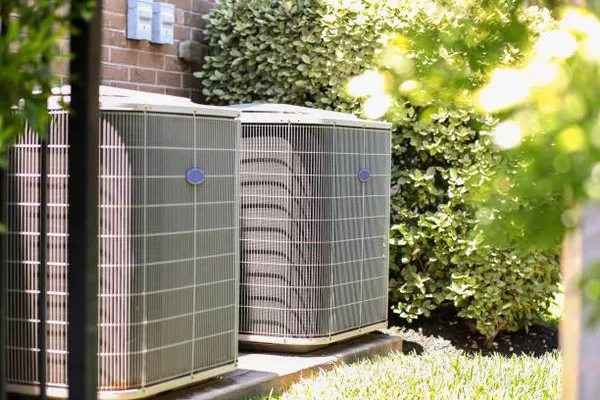In the realm of mechanical engineering, compressors play a vital role in various industries, from refrigeration to air conditioning, and from manufacturing to automotive applications. Central to the understanding and efficient operation of compressors is the concept of compressor displacement. This article aims to elucidate what compressor displacement entails, its significance, and its implications across different compressor types and applications.
What is Compressor Displacement?
Compressor displacement refers to the volume of gas compressed or displaced by a compressor in a single rotation or cycle. It is a fundamental parameter that characterizes the capacity of a compressor to compress gas. Typically expressed in cubic meters per unit of time (e.g., cubic meters per minute or cubic feet per minute), compressor displacement quantifies the amount of gas drawn into the compressor’s cylinder(s) during suction and discharged during compression.
Understanding the Types of Compressor Displacement:
Compressor displacement can be categorized into two primary types:
Swept Volume: Swept volume, also known as piston displacement, refers to the volume of gas that the piston displaces within the cylinder during its stroke. It is calculated by multiplying the cross-sectional area of the cylinder (πr², where r is the radius of the cylinder) by the piston’s stroke length (distance traveled by the piston). Swept volume is a crucial parameter for positive displacement compressors, such as reciprocating and rotary screw compressors, where gas is compressed within enclosed spaces by the mechanical movement of pistons or screws.
Effective Displacement: Effective displacement, on the other hand, takes into account factors such as clearance volume and volumetric efficiency, providing a more accurate representation of the actual volume of gas delivered by the compressor per unit of time. Clearance volume refers to the volume of gas remaining in the cylinder at the end of the compression stroke, while volumetric efficiency accounts for losses due to leakage and other inefficiencies within the compressor. Effective displacement is particularly relevant for assessing the performance of compressors with complex compression processes, such as rotary vane and centrifugal compressors.
Significance of Compressor Displacement:
The significance of compressor displacement lies in its direct correlation with the compressor’s capacity to generate compressed gas. By understanding and optimizing compressor displacement, engineers can:
Size and Select Compressors Appropriately: Knowledge of compressor displacement enables engineers to select compressors with the appropriate capacity to meet specific application requirements. Whether it involves maintaining a consistent pressure in an HVAC system or supplying compressed air for pneumatic tools, selecting a compressor with adequate displacement ensures optimal performance and energy efficiency.
Determine System Performance: Compressor displacement directly influences the flow rate and pressure capabilities of a compressor system. By accurately calculating displacement, engineers can predict system performance, including flow rates, pressure levels, and temperature variations, thereby ensuring the reliability and effectiveness of the compressed gas supply.
Optimize Energy Efficiency: Efficient compressor operation is essential for minimizing energy consumption and operational costs. By optimizing compressor displacement and matching it with the system’s demand, engineers can enhance energy efficiency, reduce unnecessary cycling, and lower overall energy consumption, contributing to both economic and environmental sustainability.
Implications Across Different Compressor Types:
The concept of compressor displacement manifests differently across various compressor types, each characterized by unique operational principles and performance characteristics:
Reciprocating Compressors: Reciprocating compressors utilize pistons to compress gas within cylinders. The displacement of a reciprocating compressor is determined by the piston’s stroke length, cylinder diameter, and number of cylinders. Swept volume is a primary consideration for reciprocating compressors, with effective displacement being influenced by factors such as clearance volume and piston speed.
Rotary Screw Compressors: Rotary screw compressors employ intermeshing helical rotors to compress gas. Displacement in rotary screw compressors is primarily determined by the rotors’ geometry, rotation speed, and the length of the compression chamber. Swept volume calculations are crucial for assessing the displacement capacity of rotary screw compressors, while effective displacement accounts for factors such as rotor clearances and volumetric efficiency.
Rotary Vane Compressors: Rotary vane compressors feature vanes that slide in and out of slots within a rotor to compress gas. The displacement of rotary vane compressors is influenced by the rotor diameter, vane length, and the number of vanes. Effective displacement considerations include vane clearances and leakage losses, which impact the compressor’s overall efficiency.
Centrifugal Compressors: Centrifugal compressors utilize high-speed rotating impellers to impart kinetic energy to the gas, which is then converted into pressure. Displacement in centrifugal compressors is determined by the impeller’s geometry, rotational speed, and the design of the diffuser and volute. Effective displacement is influenced by factors such as leakage losses and the compressor’s adiabatic efficiency.
Conclusion:
Compressor displacement serves as a cornerstone in the design, operation, and optimization of compressor systems across diverse applications and industries. By comprehensively understanding the concept of compressor displacement and its implications for different compressor types, engineers can effectively design, select, and operate compressors to meet specific performance requirements while maximizing energy efficiency and reliability. As technology advances and demands evolve, the optimization of compressor displacement will continue to play a pivotal role in enhancing the efficiency and sustainability of compressed gas systems worldwide.

